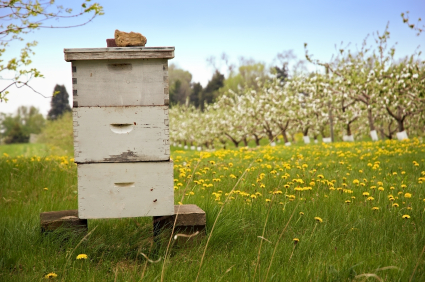 |
|
|
 |
 |
Many
people are familiar with the look of solar panels: they
look like a shiny black Ritz cracker and are not exactly appealing to
the eye. New technology is on the rise, however. Thanks to
nanotechnology, new solar panels are on the scene, and will not
resemble their 1970’s counterparts at
all. In fact, new solar panels are more likely to look like a roll of
film than the panels of yore.
 Why the change? Mounting a large glass panel on your home is
difficult, expensive, and dangerous. It’s also an economic issue: old solar
panels cost about four to five dollars for every watt of energy generated. To compete
with conventional electricity, this figure needs to be reduced to one dollar. Why the change? Mounting a large glass panel on your home is
difficult, expensive, and dangerous. It’s also an economic issue: old solar
panels cost about four to five dollars for every watt of energy generated. To compete
with conventional electricity, this figure needs to be reduced to one dollar.
New solar panel technology uses particles one hundred times
smaller than human hair to generate electricity. They’re called quantum dots
and they capture light and the light is converted into electrons. This
technology is leading to the production of small, flexible solar panels. Several
new companies have started developing solar panels that can be printed onto
plastic sheets using roll-to-roll technology. These sheets look similar to a newspaper
printing press.
This new solar panel technology is still in its infancy, so
don’t expect the old- school solar panels to go away quickly. New technologies are constantly being discovered
and improved upon in this field, so expect big things in the future.
|
|
 |
 |
Save your money and your planet by increasing the energy efficiency of your home. Here are three ways:
1. Green up your appliances.
Appliance use comprises about 18% of a typical energy bill, with the
fridge being one of the biggest energy drains. If any of your
appliances are more than ten years old, the EPA suggests replacing them
with energy-efficient models that bear the "Energy Star" logo. Energy
Star-rated appliances use 10%-50% less energy and water than standard
models. According to the Energy Star website, if just one in ten homes
used energy-efficient appliances, it would be equivalent to planting
1.7 million new acres of trees.

2. Watch the temperature. Almost
half a home's energy consumption is due to heating and cooling. Turn
down the thermostat in cold weather and keep it higher in warm weather.
Each degree below 68°F (20°C) during colder weather saves 3%-5% more
heating energy, and keeping your home at 78°F in warmer weather
brings similar results. A programmable thermostat will make
these temperature changes for you automatically.
To keep your home cool in warmer weather, shade your east
and west windows and delay heat-generating activities (such as washing
the dishes) until the evening. Whenever possible, use ceiling fans instead
of air conditioners. Light clothing in the summer is typically
comfortable for temperatures between 72°F and 78°F. Moving air feels cooler, so a
slow-moving fan can easily extend that comfort range to 82°F.
Also, clean your furnace's air filter monthly during heavy usage. Depending on the age of
your furnace, you may want to consider a new one. Today's furnaces are
about 25% more efficient than they were in the 1980s. If you're in the
market for a new furnace, check out ones that have the Energy Star
label.
3. Use energy-efficient light.
Compact Fluorescent Light bulbs (CFLs) use 66% less energy than
standard incandescent bulbs and last up to ten times longer. Replacing a
100-watt incandescent bulb with a 32-watt CFL can save $30 in energy
costs over the life of the bulb.
|
|
 |
 |
 It takes about the same amount of time and effort to
maintain your garden as it does to become a beekeeper. Bees will also help
the plants in your yard thrive, and they will give you a new and interesting hobby. So what
are some basic things you need to get started? It takes about the same amount of time and effort to
maintain your garden as it does to become a beekeeper. Bees will also help
the plants in your yard thrive, and they will give you a new and interesting hobby. So what
are some basic things you need to get started?
Before you launch into beekeeping, you need to make sure that there are no
laws in your area against beekeeping. You should also be mindful of your family
and neighbors when making this decision, in the event of allergies.
The next step is to purchase or build a hive. A hive can easily be
constructed with 2x4’s and cement blocks. The hive should be about
eighteen inches
off the ground to protect it from skunks. You should also place bark or
mulch
under the hive to prevent mudu buildup. Detailed plans ffor a bee hive
can easily be found online.
Protective gear is essential. A basic beekeeping outfit
consists of a hat and veil combo, teamed with a lightweight jacket. For
heavy-duty work, bad weather, or angry bees, you’ll need a full suit. Many
beginners start out with the full suit because they are unaccustomed to working
with bees.
A
beekeeper’s best friend is his or her smoker. A smoker is
a cylinder with a bellows attached, inside which you build a small,
slow burning fire as this will produce mostly smoke. When you squeeze
the bellows inside the
hive it disrupts communication between the bees and it allows you to do
work
with minimal interference. Keep it lit at all times, and your
beekeeping will
go smoothly.
Now that you have your basic gear and your hive is built, all you you
need bees. Look in beekeeping journals/periodicals, or see if your town
has a local
beekeeping association. Make other beekeepers aware that you are a
beginner and they will likely recommend types of bees and their
characteristics. When it comes to moving the bees into your hive,
request instructions from the association, or ask if a
member could come out and assist you.
Beekeeping can be a
rewarding hobby. With the right information, a good hive of bees, and
the right equipment, success is easy. The benefits will show in your
personal gardens, and be immeasurable to neighboring flora as well.
Good
Luck!
|
|
 |
|
|
|
 |
|
In This Issue:
|
|
 |
|
Updates from My Office
|
|
|

|
|
Car Pool Etiquette
|
Considering a car pool? Already a carpooler? Follow these
steps to keep your new friends happy:
--Remember that when
you’re late, everyone else will be as well.
--Have
everyone’s contact information in case something changes at the last minute.
--Be
properly insured.
--Go
easy on the cologne and perfume in the morning.
--Don’t
be a radio hog. You can miss your favorite show once in a while.
--Hop in
the backseat if you are skinny or short, just out of common courtesy.
--Pay on
time. You don’t want to be a deadbeat, and your friends don’t want to
become bill collectors.
|

|
|
Instantaneous Water Heaters
|
Instantaneous or tankless water heaters supply hot water
only when you need it. Depending on usage, this style can be up to 50% more
efficient than traditional water heaters. If you have a large household, it may
be wise to install multiple units to avoid the occasional cold shower. Here are
some additional benefits:
Save Space
Instantaneous heaters are around the size of a medium
suitcase. This allows you to install them closer to the main sources of hot
water use in your home.
Stay Hot
Household units can generate up to seven gallons of hot water
per minute, industrial models can generate hundreds of gallons per minute.
Save Money
The storage tank has been eliminated, so it can’t clog up
with rust and deposits. A pilot light isn’t wasting gas, and water is heated on
demand. It’s a good way to save energy and money.
|
|
 |
